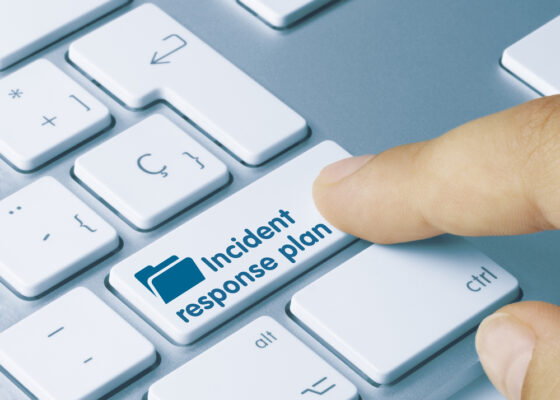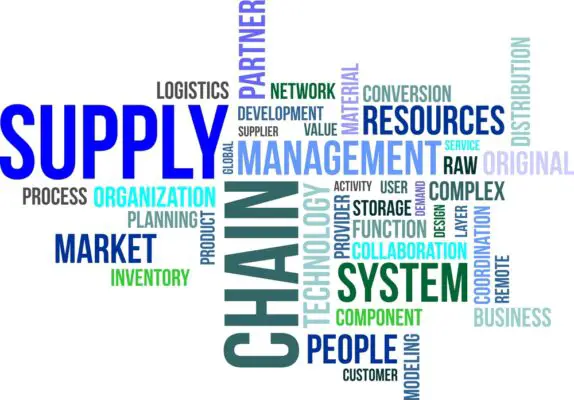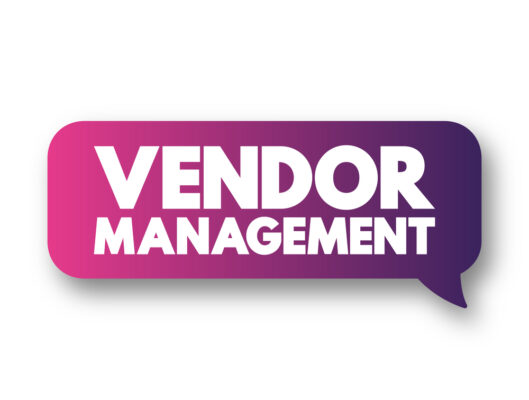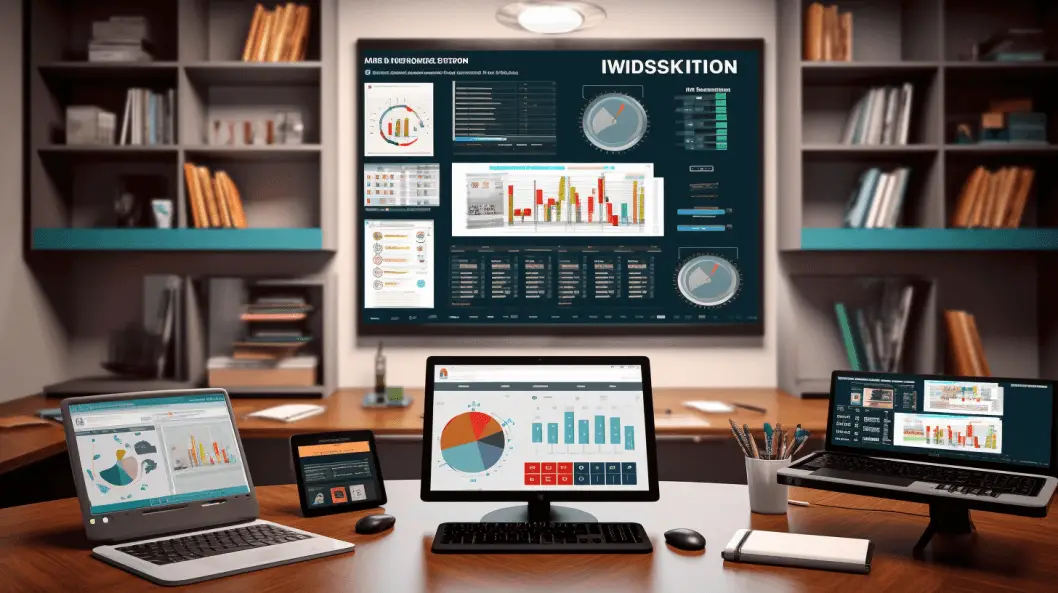Importance of incident management in risk management
Incident management plays a pivotal role in risk management, serving as the bedrock upon which organizations can effectively mitigate and respond to unforeseen events.
Professional risk practitioners understand the critical nature of incident management in safeguarding their organizations against potential threats and ensuring business continuity. By implementing robust incident management practices, these practitioners can proactively identify, assess, and address incidents promptly and efficiently.
The need for incident management arises from organizations‘ inherent unpredictability of risks. From cyber attacks and natural disasters to operational disruptions and supply chain failures, incidents can arise from various sources and have far-reaching consequences.
Efficient incident management enables risk practitioners to navigate these turbulent waters, minimizing the impact of incidents and swiftly restoring normal operations.
At its core, incident management involves a systematic approach to identifying, analyzing, and resolving incidents. It encompasses a range of activities, including incident reporting, risk assessment, communication and collaboration, incident tracking, and data analysis.
By implementing a comprehensive incident management framework, organizations can gain greater visibility into potential risks, streamline their response efforts, and make informed decisions to protect their assets and reputation.
In the following sections, we will explore the essential incident management tools that risk practitioners can utilize to bolster their incident management capabilities.
We will delve into the features to look for in these tools, provide best practices for implementation, and examine case studies that highlight successful incident management strategies.
After reading this article, you will gain a comprehensive understanding of how incident management tools can empower risk practitioners to confidently and resiliently navigate the constantly evolving risk landscape.
Let’s delve into the tools that will transform your incident management practices.

Essential Incident Management Tools
Professional risk practitioners rely on essential incident management tools to effectively mitigate and respond to risks.
These tools streamline the incident management process, enhance communication and collaboration, and provide valuable insights through data analytics and reporting. Let’s take a closer look at some of these indispensable tools.
Incident Reporting Software
Incident reporting software is a vital tool that enables risk practitioners to capture and document incidents in a structured and efficient manner.
This software simplifies the incident reporting process with its user-friendly interface and customizable features.
It allows practitioners to record essential information such as incident details, impact assessment, and mitigation measures. Centralizing incident data makes it easier to analyze trends, identify recurring issues, and make informed decisions to prevent future incidents.
Risk assessment tools
Accurate risk assessment is crucial for effective incident management. Risk assessment tools allow risk practitioners to evaluate various risks‘ likelihood and potential impact. These tools employ sophisticated algorithms and methodologies to analyze data and assign risk levels.
They enable practitioners to prioritize incidents based on severity, allowing them to allocate resources effectively and promptly address high-priority risks.
Through comprehensive risk assessments, practitioners can proactively identify and mitigate potential incidents before they escalate.
Communication and Collaboration Platforms
Clear and efficient communication is key to successful incident management. Communication and collaboration platforms give risk practitioners a centralized and secure environment to exchange critical information, coordinate response efforts, and engage with stakeholders.
These platforms facilitate real-time communication through instant messaging, video conferencing, and document-sharing capabilities.
These platforms enable seamless collaboration by bringing together the incident management team, ensuring that all stakeholders remain informed and can effectively contribute to the incident management process.
Incident Tracking Systems
Risk practitioners require a robust incident tracking system to monitor the progress of incident resolution and track relevant actions to manage incidents effectively.
These systems provide a comprehensive view of ongoing incidents, displaying key details such as incident status, assigned responsibilities, and deadlines.
With real-time updates and notifications, practitioners can stay informed about the latest developments and take appropriate action promptly.
Incident tracking systems also facilitate the generation of insightful reports and metrics, aiding in evaluating incident management performance.
Data Analytics and Reporting Tools
Data analytics and reporting tools are crucial in incident by helping risk practitioners derive valuable insights from incident data. These tools enable practitioners to analyze incident trends, identify root causes, and detect patterns that may indicate systemic issues.
Practitioners can make data-driven decisions to improve their incident management processes by extracting meaningful information from incident data.
Additionally, these tools facilitate the generation of comprehensive reports and visualizations, allowing practitioners to effectively communicate incident outcomes to stakeholders.
Incorporating these essential incident management tools into the incident management workflow enhances the efficiency and effectiveness of risk practitioners.
Professionals must utilize incident reporting software, risk assessment tools, communication and collaboration platforms, incident tracking systems, and data analytics and reporting tools to detect, respond to, and gain insights from incidents in a proactive manner.
Failure to do so can result in serious consequences and a lack of preparedness for potential incidents. It is imperative that these tools and systems are implemented and utilized effectively to ensure the safety and success of any organization.
These tools empower risk practitioners to minimize the impact of incidents and strengthen their organization’s risk management practices.
The next section will explore the key features for selecting incident management tools. Stay tuned!
Continue reading:
Features to Look for in Incident Management Tools
Regarding incidents, professional risk practitioners understand the crucial role that effective tools play in mitigating risks and ensuring smooth operations.
As incidents can arise unexpectedly, having the right incident management tools at your disposal can minimize disruptions, maximize response efficiency, and safeguard your organization’s reputation.
To help you navigate the vast landscape of incident management tools, here are some key features to consider when evaluating your options:
User-Friendly Interface
A user-friendly interface is one of the most essential features to look for in incident tools. This ensures that your incident management team can easily navigate and utilize the software without extensive training or technical expertise.
A well-designed and intuitive interface allows for quick access to critical information and smooth collaboration, enabling your team to respond promptly to incidents and implement necessary measures.
Customization Options
Every organization has unique needs and requirements when it comes to incidents. Look for tools that offer customization options, allowing you to tailor the software to align with your specific workflows and processes.
This flexibility ensures that the incident management system can adapt to your organization’s structure and requirements, enhancing its effectiveness and seamlessly integrating into your existing operations.
Integration Capabilities
In the fast-paced world of incidents, integration capabilities are paramount. Integrating your incident management tools with other systems and applications, such as your incident management workflow or communication platforms, enhances efficiency and streamlines processes.
Whether integrating with your existing risk management software or connecting with external data sources, seamless integration empowers your team to access real-time information and collaborate effectively.
Real-Time Monitoring and Alerting
When dealing with incidents, timely response is crucial. Look for incident management tools that offer real-time monitoring and alerting capabilities.
These features notify your team immediately when an incident occurs or certain predefined thresholds are breached. With real-time monitoring, you can proactively identify and address potential risks before they escalate, minimizing the impact on your organization and stakeholders.
Robust Reporting and Analysis
In the realm of risk management, data-driven insights are invaluable. Opt for incident management tools that provide robust reporting and analysis capabilities. These features allow you to generate comprehensive reports, visualize incident trends, and derive actionable insights from the data collected.
Utilizing analytics allows you to recognize recurring patterns, locate areas that require improvement, and make informed choices to avoid future incidents.
Ensure that you keep these essential features in mind when selecting incident tools. Doing so will guarantee that your organization is always prepared to handle incidents in a timely, efficient, and successful manner. Remember, the right tools can make a significant difference in minimizing risks and safeguarding your organization’s image.
The next section will explore the best practices for implementing incident tools, ensuring seamless integration into your risk management framework. Stay tuned!
Continue reading: Best Practices for Implementing Incident Management Tools
Best Practices for Implementing Incident Management Tools
When implementing incident management tools within an organization, there are several best practices that professional risk practitioners should follow.
These practices ensure the tools’ smooth and effective integration into the existing risk management framework, maximizing their potential and value. Let’s explore these best practices in detail:
Assessing Your Organization’s Needs
Before diving into the world of incident management tools, assessing your organization’s unique needs and requirements is crucial.
This assessment involves understanding the specific challenges and pain points your incident team faces and identifying the gaps in your current incident management process.
You can determine which tools will address these needs and provide the most value by conducting a thorough analysis.
During the assessment phase, consider factors such as the size of your organization, the complexity of your operations, and the level of integration required with other risk management systems.
This evaluation will help you tailor your selection process and choose tools that align with your organization’s goals and objectives.
Conducting a Vendor Evaluation
Once you clearly understand your organization’s needs, it’s time to embark on the vendor evaluation process. This step involves researching and selecting the right vendor for incident management tools.
Choosing a reputable vendor with a proven track record in providing reliable and effective solutions is essential.
During the evaluation, consider factors such as the vendor’s experience in the industry, customer reviews and testimonials, and the comprehensiveness of their product offerings. Look for vendors that offer scalable and customizable incident management systems that can grow with your organization’s evolving needs.
Additionally, ensure that the vendor provides excellent customer support and is responsive to your inquiries and concerns.
Training and Onboarding
Implementing new incident management tools requires proper training and onboarding for your organization’s employees. While these tools may streamline your incident management workflow, your team must know how to utilize them effectively.
Investing in comprehensive training programs will enable your employees to leverage the tools’ full potential and enhance their incident management capabilities.
Consider providing initial training sessions and ongoing support to ensure your team remains up-to-date with the latest features and functionalities. Encourage open communication and feedback among employees, fostering a collaborative environment that promotes continuous learning and improvement.
Regular Evaluation and Updates
Implementing incident tools is not a one-time task; it requires ongoing evaluation and updates. As your organization evolves and new risks emerge, it’s crucial to periodically review and assess your chosen tools’ effectiveness.
Regular evaluation will help identify any shortcomings or areas for improvement, allowing you to adjust your strategy accordingly.
Stay informed about the latest advancements in incident technology and industry best practices. Regularly review the performance of your incident management tools and explore new features or modules that can enhance your capabilities.
It is important to consistently adjust and enhance your incident system to guarantee that your organization is prepared to manage any possible risks or incidents that might occur.
To implement incident management tools effectively, it is crucial to take a strategic and systematic approach. This requires assessing your organization’s needs, conducting a thorough vendor evaluation, providing comprehensive training and onboarding, and regularly evaluating and updating your tools.
You must optimize your incident management capabilities and strengthen your overall risk management framework. Remember, effective incident management is a continuous journey of improvement and adaptation.

Case Studies: Successful Implementation of Incident Management Tools
Company A: Streamlining Incident Reporting and Response
In the fast-paced world of risk management, Company A stands out as a trailblazer in successfully implementing incident management tools.
Faced with the challenges of an ever-evolving risk landscape, the company recognized the need to streamline its incident reporting and response processes to enhance efficiency and mitigate potential threats effectively.
Company A adopted a comprehensive incident system encompassing a range of essential tools to achieve this. One of the primary tools employed was incident reporting software. This software enabled the organization to capture and document incidents in a structured and standardized manner.
Automating the reporting process eliminated the need for manual data entry, reducing the risk of errors and ensuring a more accurate representation of incidents.
Additionally, Company A integrated risk assessment tools into its incident management workflow. These tools provided the company with a systematic approach to evaluating incidents’ severity and potential impact. With the ability to assess risks objectively, the organization was better equipped to prioritize its response efforts and allocate appropriate resources accordingly.
Furthermore, effective communication and collaboration played a significant role in Company A’s successful incident management strategy.
The company leveraged communication and collaboration platforms to facilitate real-time information sharing and stakeholder coordination. This streamlined approach fostered collaboration between the incident management team, enabling them to work cohesively towards incident resolution.
To track incidents efficiently, Company A implemented an incident tracking system. This system enabled the organization to monitor the progress of incident resolution, ensuring that each incident was addressed promptly and effectively.
A centralized repository for incident information allows the company to easily access historical data, identify patterns, and make informed decisions to prevent future incidents.
Data analysis and reporting were also instrumental in Company A’s incident practices. The organization utilized data analytics and reporting tools to gain insights from incident data.
These tools allowed for identifying trends, patterns, and root causes, empowering company stakeholders to make data-driven decisions and implement proactive measures to mitigate risks.
Company B: Improving Risk Assessment and Decision-Making
Company B exemplifies the power of incident tools in improving risk assessment and decision-making processes. Recognizing the importance of avoiding emerging risks, the organization embarked on a journey to enhance its incident management capabilities.
One of the key areas where Company B sought improvement was risk assessment. By integrating advanced risk assessment tools, the company conducted a thorough analysis of incidents and their potential impact.
These tools provided the organization with a holistic view of risks, allowing them to identify vulnerabilities and evaluate their overall risk posture accurately.
Moreover, Company B recognized the need for real-time monitoring and alerting mechanisms for timely incident response. By implementing incident management tools with real-time monitoring and alerting capabilities, the organization could proactively detect and respond to incidents as they unfold.
This proactive approach minimized the impact of incidents and reduced the time required for resolution.
The organization also emphasized the importance of robust reporting and analysis to support effective decision-making. Company B utilized data analytics and reporting tools to generate comprehensive reports on incident trends, performance metrics, and root cause analysis.
These reports empowered the organization to identify areas for improvement, refine its risk management strategies, and make informed decisions to prevent future incidents.
By following best practices for implementing incident tools, Company A and Company B achieved remarkable success in optimizing their incident management processes. These case studies serve as a testament to the tangible benefits derived from adopting the right tools and leveraging them effectively.

Conclusion
In today’s rapidly evolving business landscape, incident management is essential to effective risk management. As risk practitioners strive to mitigate potential threats and ensure business continuity, having the right incident management tools in place is crucial.
Throughout this article, we have explored the key features to look for in incident management tools and discussed best practices for their implementation. By leveraging incident reporting software, risk assessment tools, communication and collaboration platforms, incident tracking systems, and data analytics and reporting tools, organizations can streamline their incident response processes and make informed decisions to mitigate risks effectively.
When selecting incident tools, it is important to consider factors such as a user-friendly interface, customization options, integration capabilities, real-time monitoring and alerting, and robust reporting and analysis. These features empower risk practitioners to adapt the tools to their organization’s unique needs and gain insights into incident trends and patterns.
Implementing incident management tools requires a systematic approach. Risk practitioners should start by assessing their organization’s needs to identify their incident processes’ specific requirements and goals. Thorough vendor evaluation is crucial to ensure the selected tools align with the organization’s objectives and provide the necessary functionalities.
Furthermore, training and onboarding are vital to equip users with the knowledge and skills to effectively utilize incident management tools. Ongoing evaluation and updates should also be conducted to ensure the tools remain aligned with the evolving needs of the organization and the ever-changing risk landscape.
To illustrate the practical benefits of implementing incident tools, we examined two case studies. In Company A, the incident reporting and response process was streamlined, enabling quicker identification and resolution of incidents. Company B improved their risk assessment and decision-making capabilities by leveraging incident management tools.
In conclusion, investing in the right incident tools empowers risk practitioners to proactively identify and address potential risks, ultimately enhancing overall risk management strategies. By leveraging the power of technology, organizations can strengthen their incident management capabilities and safeguard their operations.
To learn more about incident management, check out our blog posts on the incident management team, process, incident management system, incident management workflow, and major incident management. Stay informed, stay prepared, and stay ahead in managing risks in today’s dynamic business environment.

Chris Ekai is a Risk Management expert with over 10 years of experience in the field. He has a Master’s(MSc) degree in Risk Management from University of Portsmouth and is a CPA and Finance professional. He currently works as a Content Manager at Risk Publishing, writing about Enterprise Risk Management, Business Continuity Management and Project Management.

